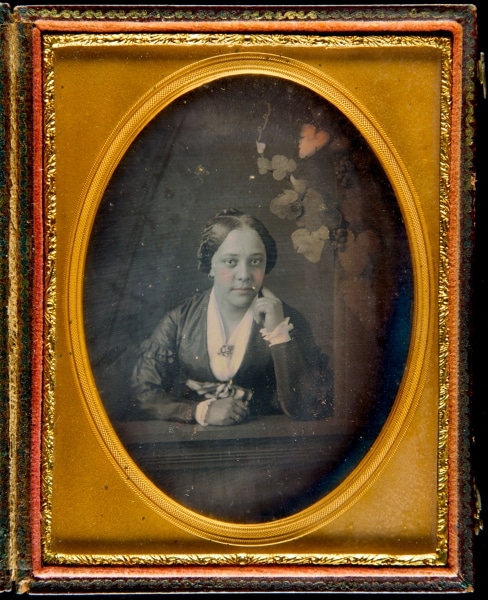The Imperfect History: Digital Catalog is Now Live!
Erika Piola, Curator of Graphic Arts and Director, Visual Culture Program
Samuel Broadbent, Portrait of an Unidentified African American Woman (Philadelphia, ca. 1850). Daguerreotype.
It is with great pleasure that we announce that the Imperfect History: Digital Catalog is now live. An integral online element of Imperfect History, the catalog creatively engages with the project’s concept of (un)conscious bias and multiple viewpoints in reading images. Graphic arts can be viewed from a multiplicity of perspectives and the curator (or cataloger) is not necessarily the final or only arbiter in deciding an item’s meaning. Four guest catalogers from the curatorial, art history, and studio art fields authored descriptions of the same visual material from their individual perspective as influenced by their discipline. To provide further context, complementary corresponding records of the same graphics created using rare visual material cataloging standards have also been included in the online platform. The catalog serves as a case study of the inherent tensions and revelations invoked from a traditionally standardized, “objective” process pro-actively made subjective and diverse.
Created with content written over 2020-2021 by guest catalogers Lauren Hewes (American Antiquarian Society), Clayton Lewis (University of Michigan, Clements Library), Tanya Sheehan (Colby College), and Joy O. Ude (Howry STEAM Academy), Imperfect History: Digital Catalog shows that subjective readings of historical graphic works of art can produce constructive and affirmative interpretations. None of the contributions prove identical from the formatting of the entries to their content. In response to the daguerreotype portrait of an African American woman, one cataloger described the visual language of formal portrait poses, while others focused on the sitter’s gaze or expression. The woman depicted was variably described as looking dignified and slightly weary; portraying a photographer’s desired “pleasant expression”; and having a challenging or possibly a coy stare.
Although a very difficult year socially, politically, and economically, its effect on the catalogers’ descriptions of an antebellum daguerreotype of an unidentified African American woman, as well as a mid-19th century allegorical print of the stages of life of a white man and a circa 1880 watercolor of an 1851 Philadelphia street scene, has been heartening. All of the catalogers’ entries evidence an attentiveness and empathy that was likely heightened by the year’s events. The result is that it reinforces the underlying message of Imperfect History about how the time period in which a person views an image affects their understanding of it. We sincerely thank the catalogers for their insightful work in further facilitating the mission of the Imperfect History project.
Imperfect History is supported by the Henry Luce Foundation, Walter J. Miller Trust, Center for American Art, Philadelphia Museum of Art, Jay Robert Stiefel and Terra Foundation for American Art.



